Chinese electric motorbikes are battling in a pressure-cooker environment with zillions of competitors and fast-paced innovation. China now boasts the world’s largest, most innovative, and most impressive electric motorbike industry—a surprising development given the country’s traditionally low numbers of heavy ICE motorcycles. Unlike the U.S. or Europe, China hasn’t cultivated a strong bike culture.
That’s beginning to change, however. Rising incomes and increased leisure time are encouraging more Chinese consumers to explore motorcycle ownership. Simultaneously, domestic manufacturing is expanding rapidly, lowering prices and increasing availability. The rise of electric motorcycles supercharged this shift. These bikes are not only cheaper and easier to operate, but also fast, quiet, and compatible with China’s growing charging infrastructure. To many consumers, an electric motorcycle represents modern, high-tech mobility, unlike the noisy, outdated image of traditional ICE bikes.
China produces a wide array of electric two-wheelers, including step-scooters, pedal-assist bicycles, scooters, and motorcycles. Collectively, these are referred to as “electric two-wheelers.” Chinese manufacturers often use the terms electric scooter and electric motorbike interchangeably, depending more on a vehicle’s appearance than its performance. As a result, a “scooter” or “motorbike” might have anything from a 5 HP to a 50 HP motor. In this article, the focus is on high-performance scooters and motorcycles.
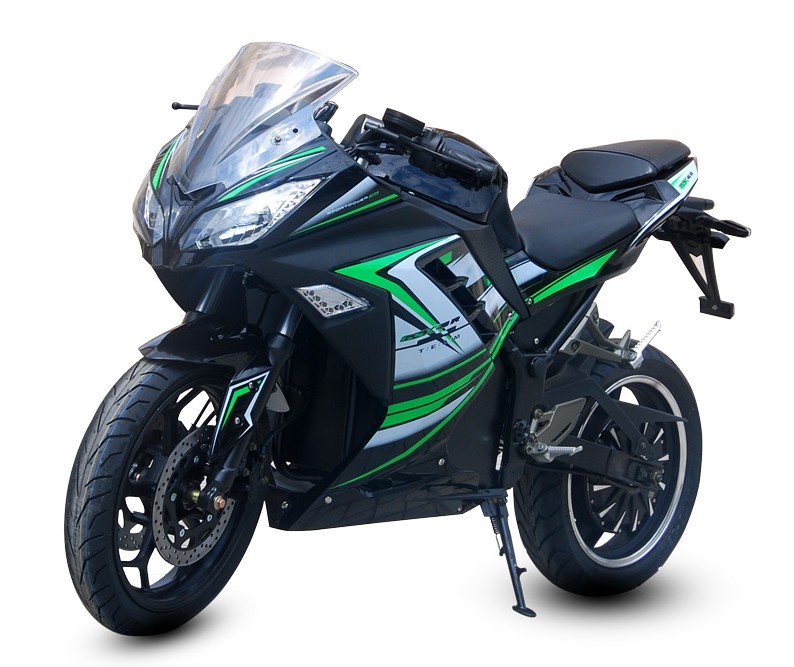
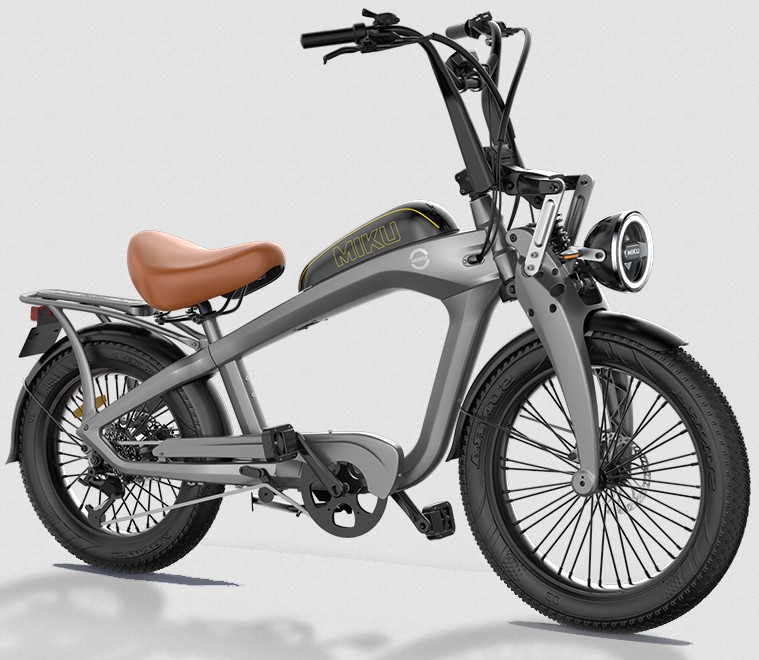
The Market & the Makers
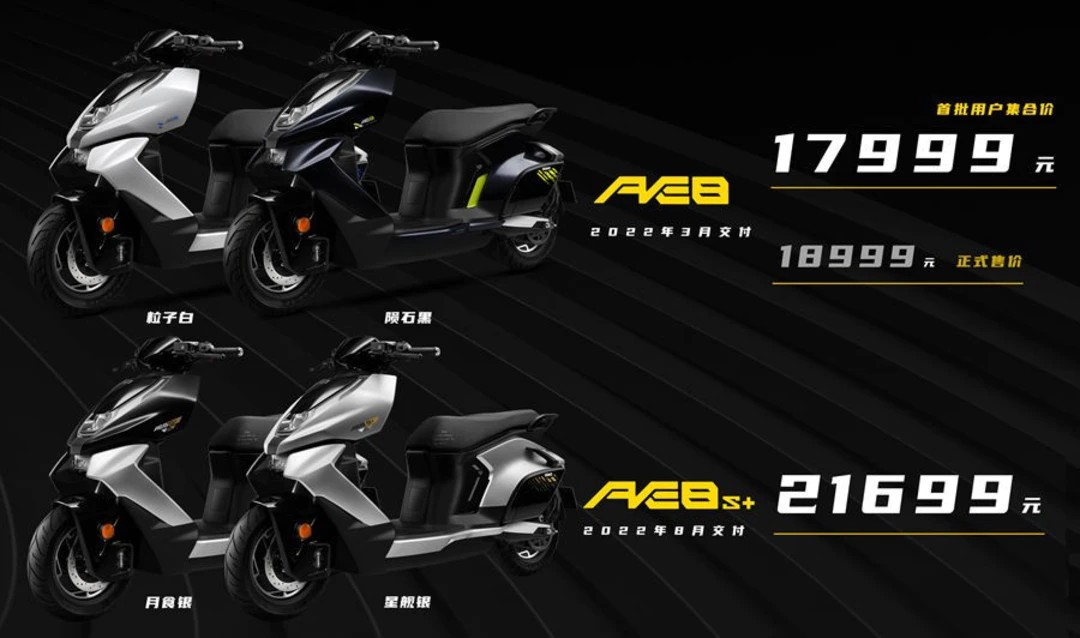
Much like the automotive sector, China’s electric motorbike market is defined by relentless competition. With hundreds of brands vying for attention, the pressure is constant, and companies either evolve quickly or fade away. It’s not unusual for manufacturers to launch several new models each month, along with frequent updates to existing lineups. Competition extends across every conceivable dimension: price, technology, design, brand image, dealer network size, after-sales service, and warranty coverage. Brand loyalty is virtually nonexistent. Chinese consumers are highly pragmatic and will switch brands without hesitation if a better deal or a more compelling product comes along. This creates an environment of rapid turnover, constant product refreshment, and razor-thin margins—only the most agile players survive.
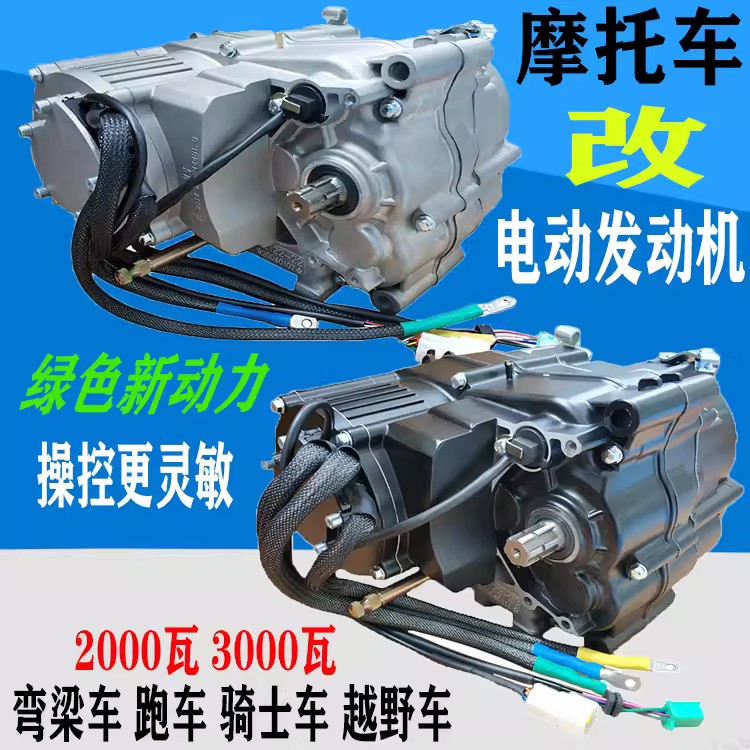
Core components such as motors, batteries, and electronics are typically supplied by specialized manufacturers rather than being developed in-house, so setting up a new brand is relatively easy. The electric two-wheeler landscape is similar to the world of Low Speed Electric Vehicles (LSEVs), and there are an estimated 150 motorbike-producing brands that operate nationwide. In addition to those, hundreds of smaller brands only sell in their home provinces or cities. Companies frequently emerge, merge, acquire others, get acquired, vanish, and occasionally make a comeback.
Pricing

Chinese consumers can buy electric two-wheelers online, in shopping malls, or shops. In many cities, these shops are clustered together, so folks can try out any brand they want. The pricing varies enormously. It depends on the kind of motor, the kind of battery, and even on the location. Generally speaking, prices in the big cities are way higher than down in the countryside. A small electric scooter will set you back about 3000 yuan ($418), a good one about 7000 ($975). A larger scooter or electric motorbike may cost anywhere between 10.000 and 50.000 yuan ($1393-$7000), and bikes in the absolute top segment may cost up to 177.700 yuan ($24.8K).
Size, Weight, and Technology of Chinese electric motorbikes
Fierce competition is great for technology. Brands constantly launch new and updated stuff. It’s a permanent race, leading to vast improvements in electric motorbike tech in a very short time. Chinese electric motorbikes tend to be compact and relatively lightweight. A typical model measures approximately 77 inches in length, 26 inches in width, and 38 inches in height, with a wheelbase of around 54 inches. Weight largely depends on the size of the battery pack, but most electric bikes have a curb weight—including battery—of between 375 and 486 pounds.

Motors and Drivetrains
Most electric motorbikes use a permanent magnet synchronous motor (PMSM), a popular choice due to its efficiency and responsiveness. Power output varies significantly across models. Entry-level bikes may have as little as four horsepower, while more advanced models can produce up to 20 horsepower. At the high end of the spectrum, a few performance-oriented machines deliver 65 horsepower or more, blurring the line between commuter bikes and full-fledged electric sportbikes.

The standard configuration for electric motorbikes is the mid-drive motor, which is centrally mounted and transfers power to the rear wheel via a chain or belt. The exact placement varies—some are mounted low in the chassis for better stability, others are positioned higher or closer to the rear. Fortunately, because electric motors are lightweight, motor placement doesn’t affect weight distribution as dramatically as it does in internal combustion bikes.


Hub motors are fully integrated into the rear wheel. This setup has significant advantages in terms of packaging and ease of maintenance—the motor is out of the way and easy to replace. However, hub motors place extra weight on the wheel itself, requiring a stiffer rear suspension and harder tires, which can compromise ride comfort and handling. However, modern hub motors have become significantly lighter and smaller.
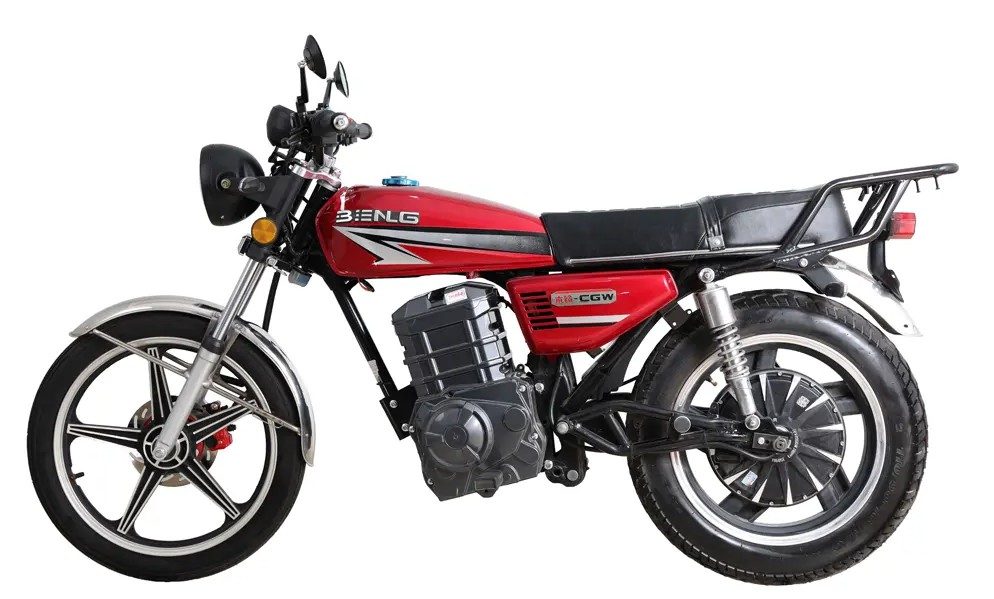
Lithium-Ion, LFP, and Sodium Battery Technologies

The dominant battery type in Chinese electric motorbikes remains lithium-ion, valued for its relatively high energy density and fast charging capability. But lithium iron phosphate (LFP) batteries are gaining ground. LFP batteries are cheaper, more chemically stable, and offer a longer service life, but are heavier, offer lower energy density, and charge more slowly. Those drawbacks are becoming less relevant as the technology improves, but for now, lithium-ion still rules.

A recent development is sodium-ion batteries. Many Chinese companies are working on this technology for vehicles of all sizes, and the first commercial usage is in electric two-wheelers. At least two brands are selling scooters and bikes with sodium-ion battery packs. Sodium is much more abundant and cheaper than lithium, and sodium-ion batteries are claimed to offer longer life and less sensitivity to cold climates.
Battery Swapping and Charging
The latest and most expensive electric motorbikes can charge at a DC automotive fast-charger, just like a Tesla, and achieve a full charge in only 5 to 10 minutes. Other bikes can juice up with regular AC chargers.
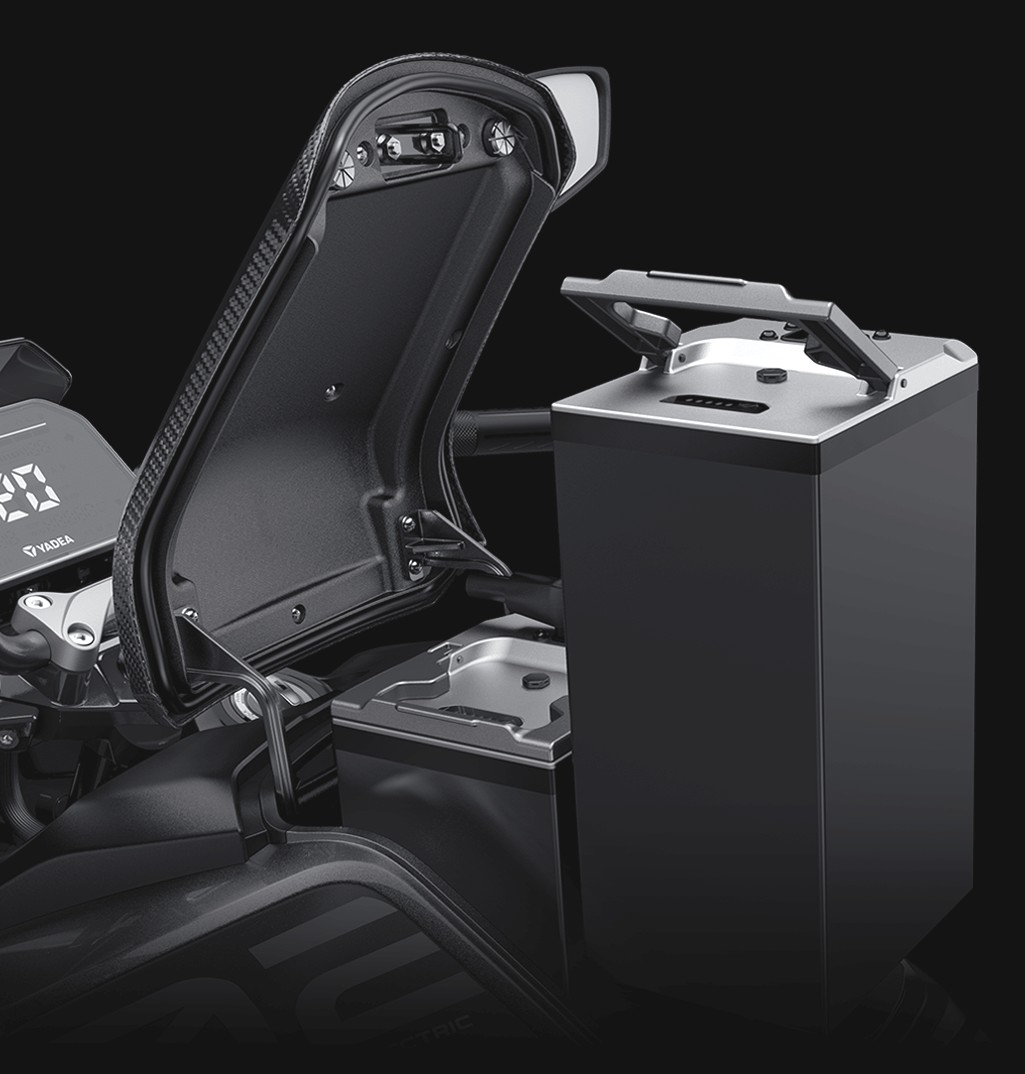
With small electric two-wheelers, the battery pack is usually removable. Users simply take it out and charge it at home. With batteries becoming smaller and lighter, this solution is now also available for larger battery packs in larger & more powerful vehicles. In some cases, the manufacturer has divided the battery pack into two separate units. When one unit is empty, the user only needs to charge that part, leaving the other part in the vehicle.

Charging batteries at home is not always safe, however. In older buildings, the electrical infrastructure often can’t handle the increased demand, especially during the peak hours around 7:00–8:00 p.m. when people return from work. This can lead to short circuits, and there have been numerous fires caused by overheated scooter batteries. Lots of apartment complexes forbid battery-charging at home.
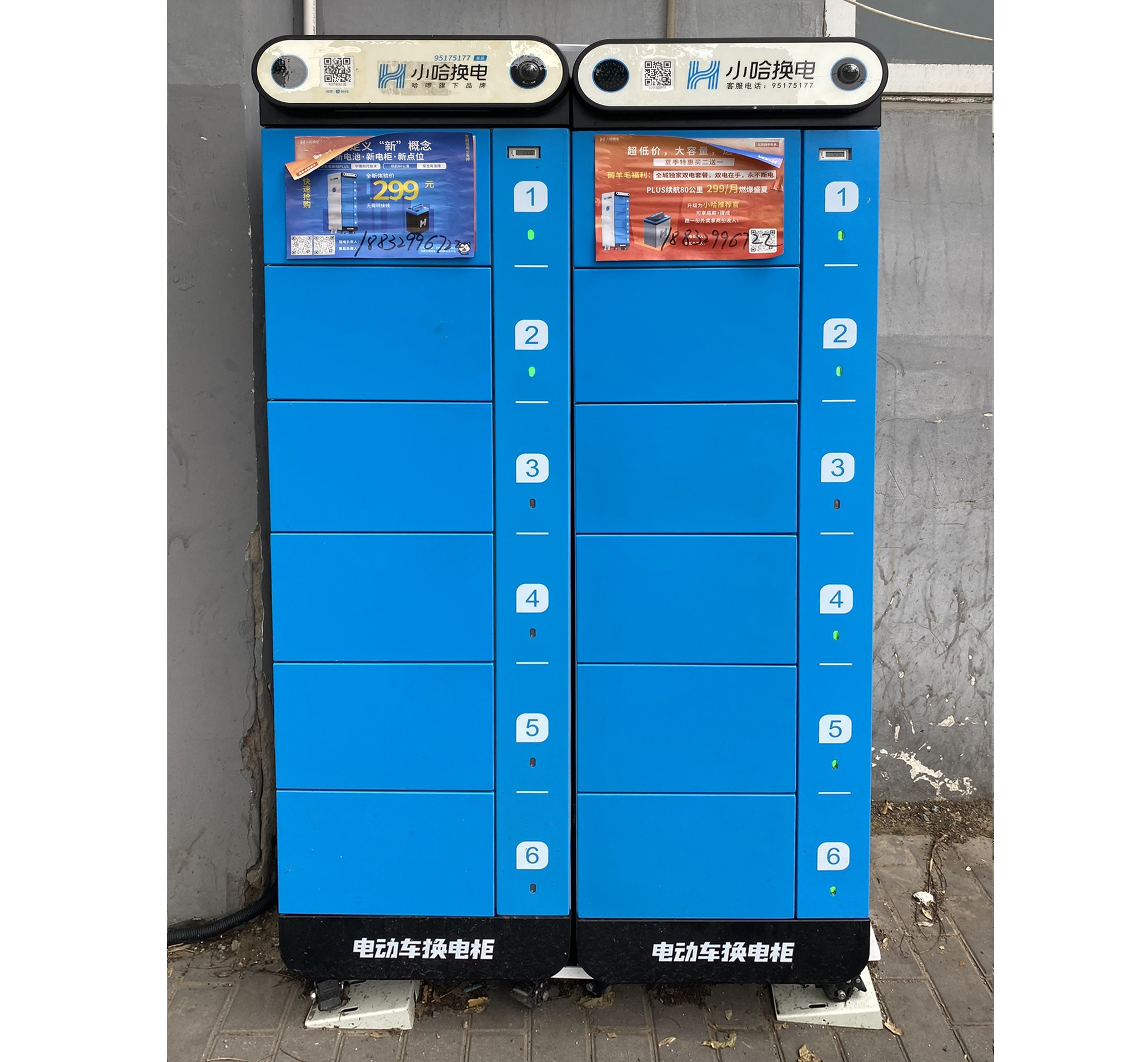
Battery-swapping helps mitigate high charging demands on infrastructure. Some battery-swap systems are operated by the manufacturer, others by third-party companies, and others by a mix of both. Sometimes, companies and local governments work together to create battery-swap networks. A scooter battery-swap station looks like a giant file cabinet. The whole process is controlled via an app, and trading a depleted battery for a charged pack only takes about three minutes. Large scooter-battery-swap schemes exist in Beijing, Shenzhen, Wuhan, and many more cities.

With the introduction of smaller and lighter battery packs, battery swapping is becoming feasible for larger electric motorcycles as well. Some Chinese brands have plans for swapping networks with stations in cities and alongside highways, like NIO has for electric cars.
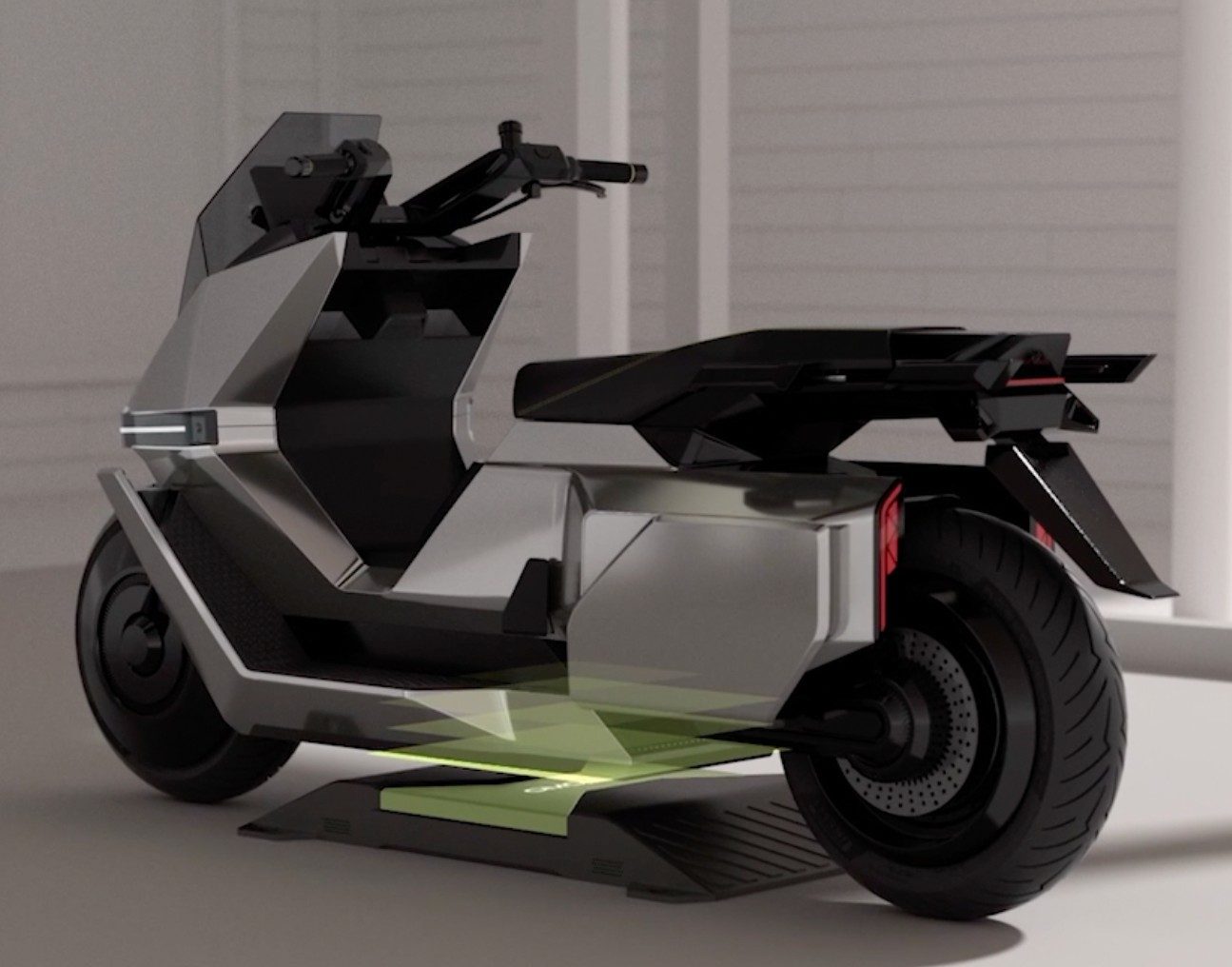
Wireless charging, or induction charging, is a relatively new technology in China. It is used for charging electric buses, and some automakers, like Hongqi, offer wireless-charging cars. Electric motorbike companies are getting interested too. Wireless charging is safer and less complicated, as all the equipment is underground. It is slower, too, but that is changing fast. One wireless charging pioneer is Omoway, which has developed a wireless charging station for its Omo X scooter.
Tires & Brakes
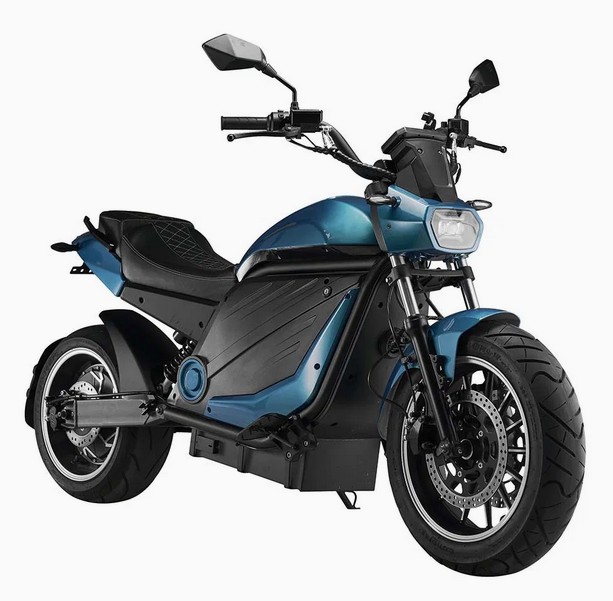
When it comes to rubber and braking systems for China’s electric motorbikes, anything goes! Most brands use tubeless tires, and some high-end scooters have racy Pirelli motorcycle tires. The most common brake setup is a single disc brake for each wheel, while more powerful bikes have dual discs up front.


Bikes with hub motors present an engineering challenge. Solutions include an additional brake disc fitted next to the hub; slowing the hub motor via its own electromagnetic force; and even putting the hub motor in reverse [Ed note: This is, reverse voltage is applied. The wheel doesn’t actually spin in reverse, presumably – Pete] – or a combination of all three. The reverse-power trick is rare and only used by some brands as an emergency-stop technology.
Connectivity and Self-Driving

Chinese consumers love connectivity and apps. Modern electric motorbikes have permanent 5G connectivity for over-the-air (OTA) updates and for Cloud services. Owners can download apps to locate the vehicle, start it, and check out performance data and maintenance information.
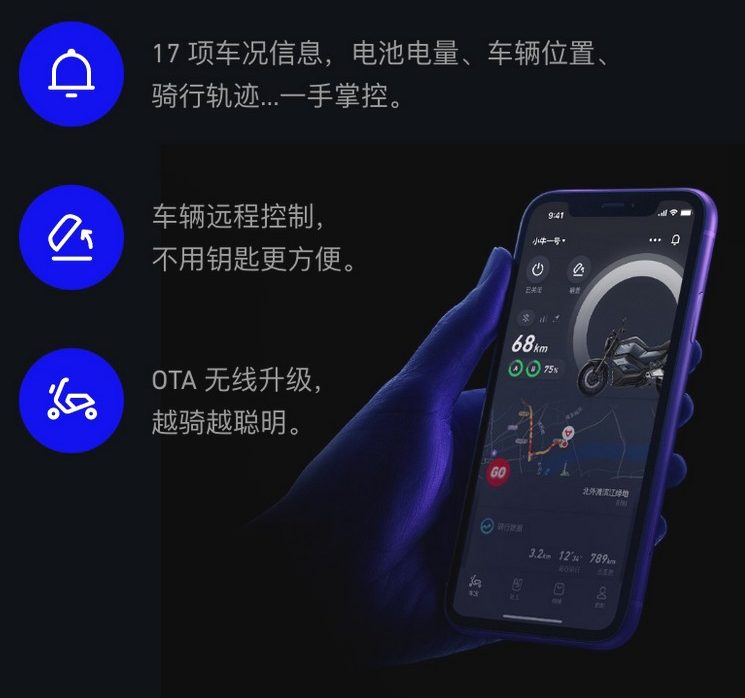
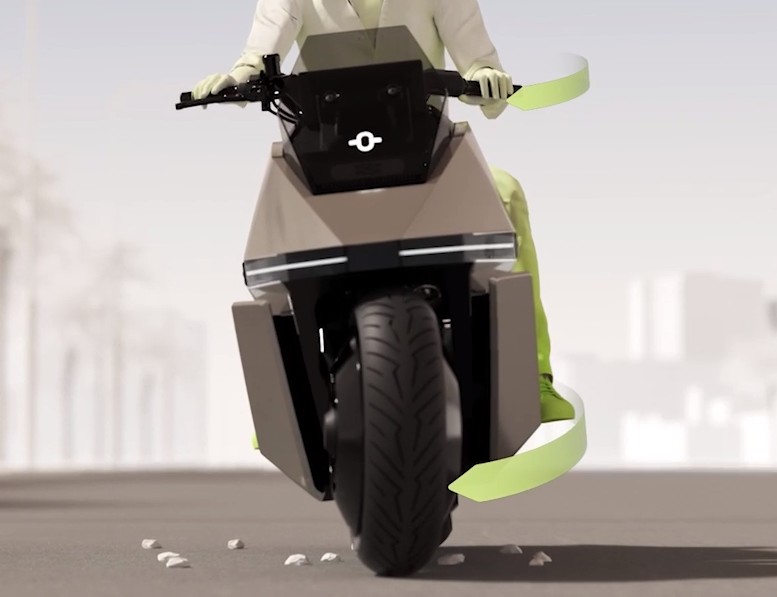
With the fast-developing ADAS technology for cars in China, it is no surprise that this technology is now available for high-end electric motorbikes as well. The aforementioned Omo X has a summon function and can park itself. It also has autonomous balance & posture control, adaptive cruise control, and collision-assistant braking.

The ride assist system of the DaVinci Motor DC100 has a tool called Smooth Forward & Reverse Assist. It autonomously accelerates the bike from 0 to 4 mph. When in reverse, it moves backward with a max speed of 3 mph. DaVinci has combined this tool with Hill-Start Assist Control and Hill Descent Control, allowing the bike to ride up or down a hill autonomously.
Marketing
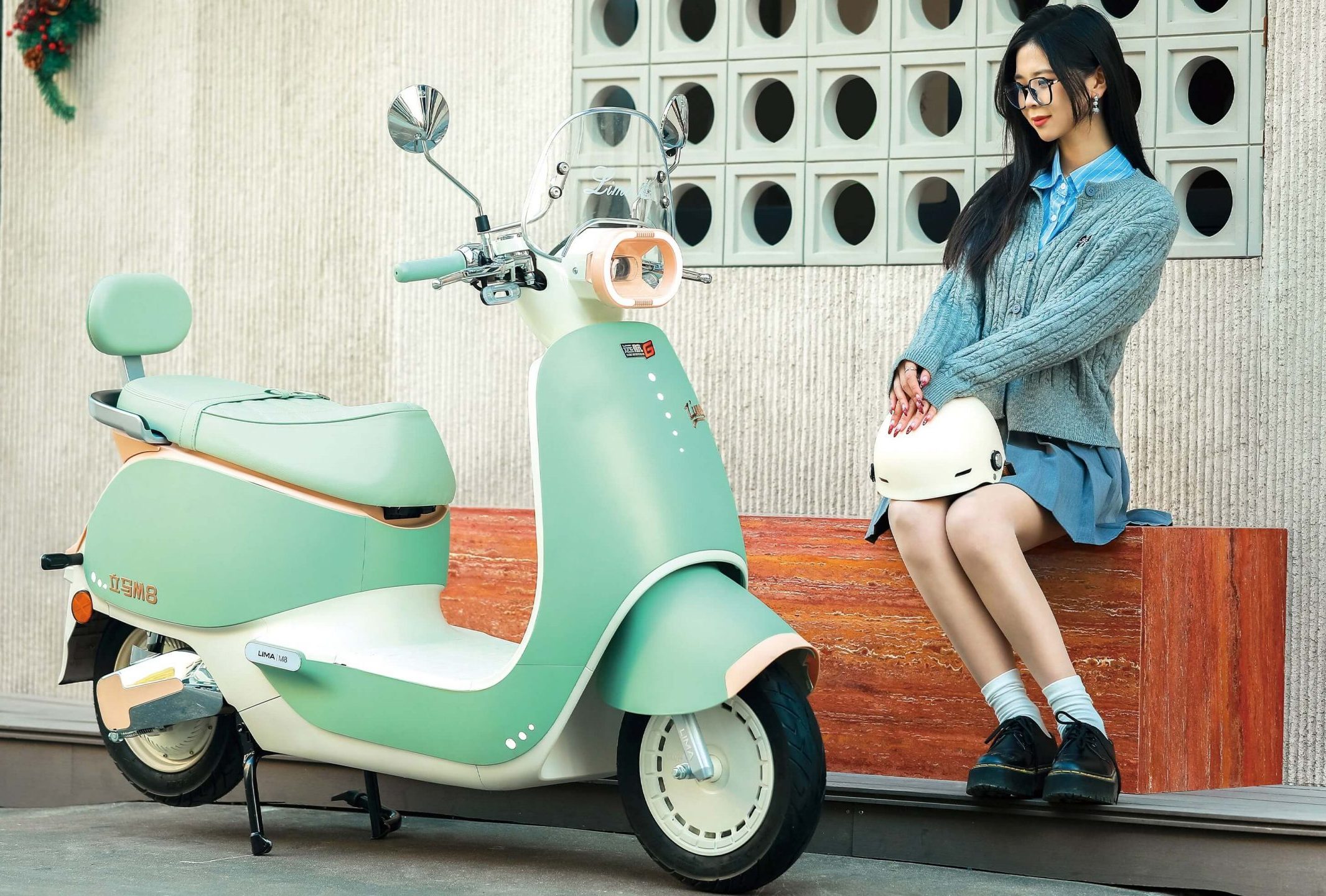
The Chinese electric motorbikes are, without exception, aimed at young folks. The emphasis is on design, connectivity, and range. There is less attention for power, safety, or EV technology. Many brands, for example, don’t even mention what kind of motor or battery powers the vehicle. Some of the smaller scooters are aimed exclusively at female buyers.
The coolest Chinese electric motorbikes
The electric two-wheeler industry is relatively young and very wild. By the time I submit this story, a new brand may have been launched, and a dozen new bikes – it’s a bit like the Chinese automotive industry in the early 2000s and again in the early 2020s. Thus, it was not easy to select the coolest brands and bikes, so I collected quite a few.
AW Motor A-E1
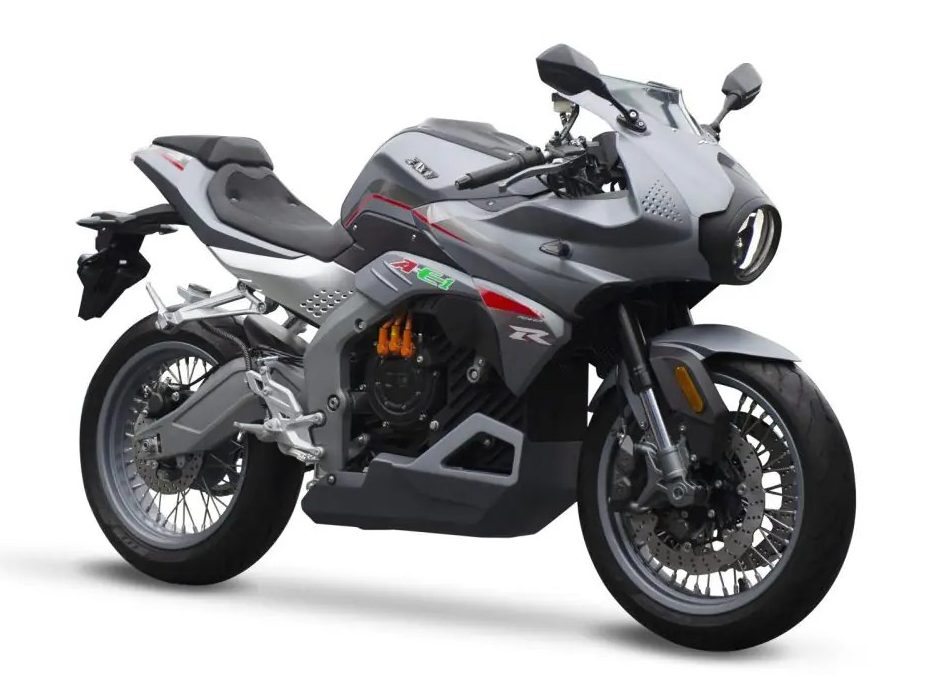
AW Motor Hangzhou is a two-wheel maker founded in 2021 and based in Hangzhou in Zhejiang Province. The company makes ICE racing bikes and recently launched its first electric motorbike.
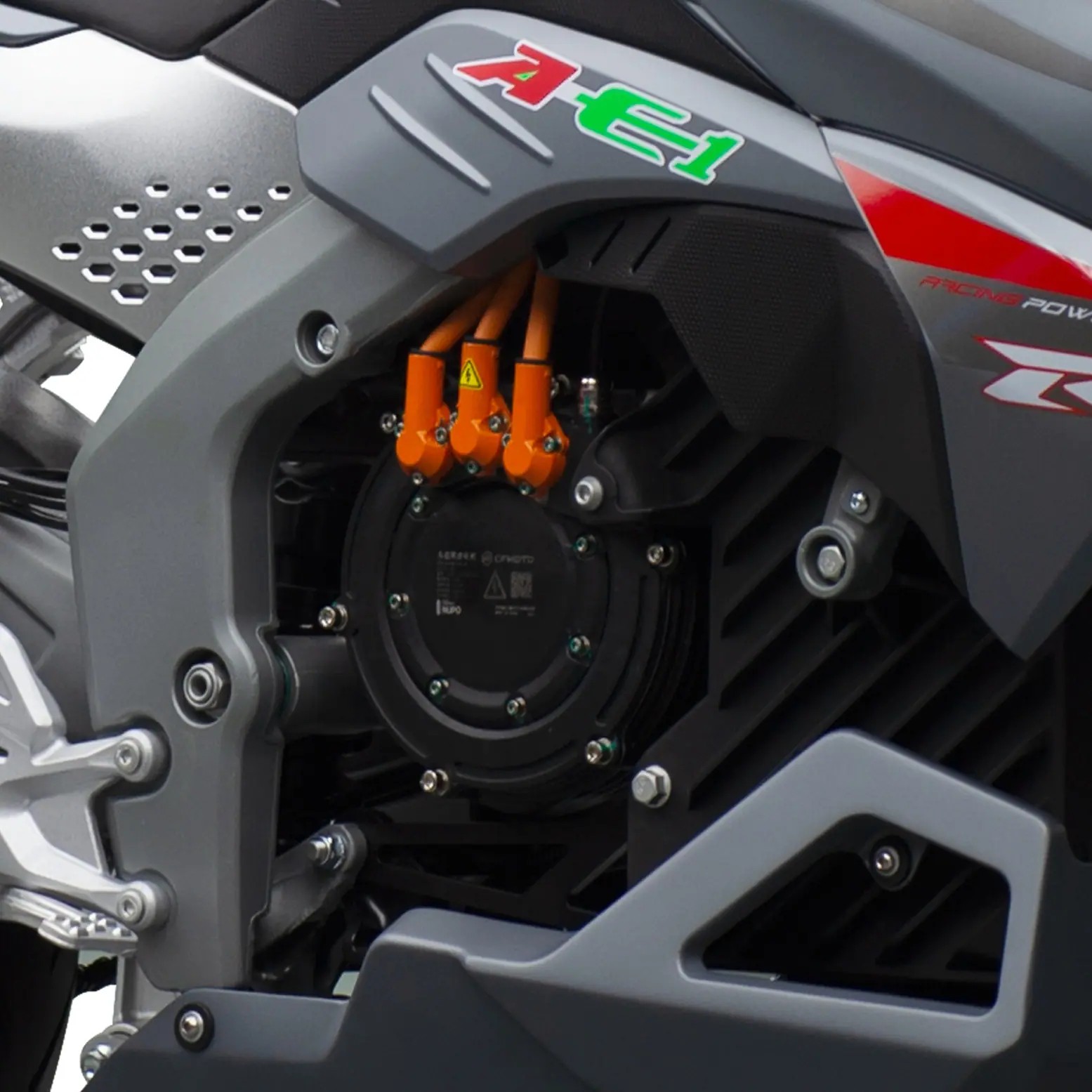
The A-E1 has a nice retro-tech design with wire wheels and flashy stickers. It has a mid-drive motor setup with exposed orange wiring, just like in a Polestar 1. The output is 23 hp and 332 ft-lbs and it has a 99 mph top speed, does 0-100 in 3 seconds, and will take you 93 miles on a charge. The A-E1 weighs 409 pounds, and the wheelbase is 54 inches. It has 17-inch Pirelli tires and double-disc brakes at the front. AW Motor shares some rousing talk about the A-E1, for example: “Charge fast, ride farther, and ditch the gas station. Eco-friendly meets adrenaline.” OK!
Bashan BS7000D

Bashan is a brand based in Chongqing, founded in 2002. The full company name is Chongqing Astronautic Bashan Motorcycle Manufacturing. It makes ICE motorbikes, electric two-wheelers, plus ATVs and small agricultural machinery.

The Bashan BS7000D is a racy machine with a 17 hp mid-drive electric motor and a 77.7 mph top speed. Electricity is stored in a 72V30Ah battery for a 161-mile range. Interestingly, Bashan also says that the bike has an IP67 waterproof rating. I haven’t seen that parameter at any other brand.

Davinci Motor DC100
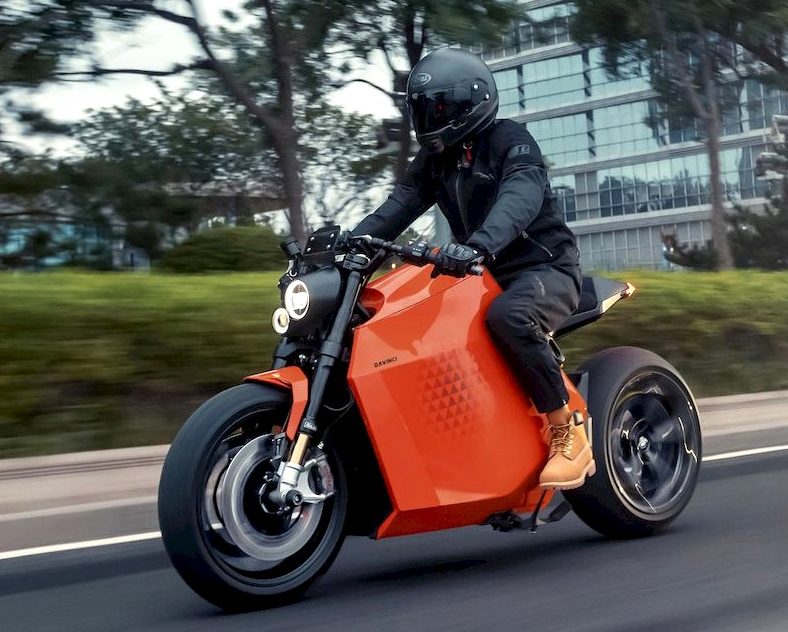
Davinci Motor is based in Beijing and was founded in 2013 by engineers from the capital’s famous Tsinghua University. The DC100 has a high-tech, futuristic design and massive amounts of power. It has no dashboard, only a smartphone holder that turns into a dash with the Davinci app.

The DC100 has a hub-motor setup. It is very strong for an in-wheel motor, with 127 hp and 627 ft-lb. The top speed is 124 mph, and 0-100 takes 3 seconds. Because the motor is out of the way, the battery can be big: 17.7 kWh for a claimed WLTP range of 222 miles. The wheelbase is 60.55 inches and the bike weighs in at 584 lbs.

Davinci Motor calls the DC100 a robot because it has “200 advanced sensors” that track information on the bike and its environment. All these smart electronics require regular OTA software updates. It sells for 177.700 yuan ($24.8K), and that makes it the most expensive Chinese electric motorbike of the moment.
Electripet Hipee
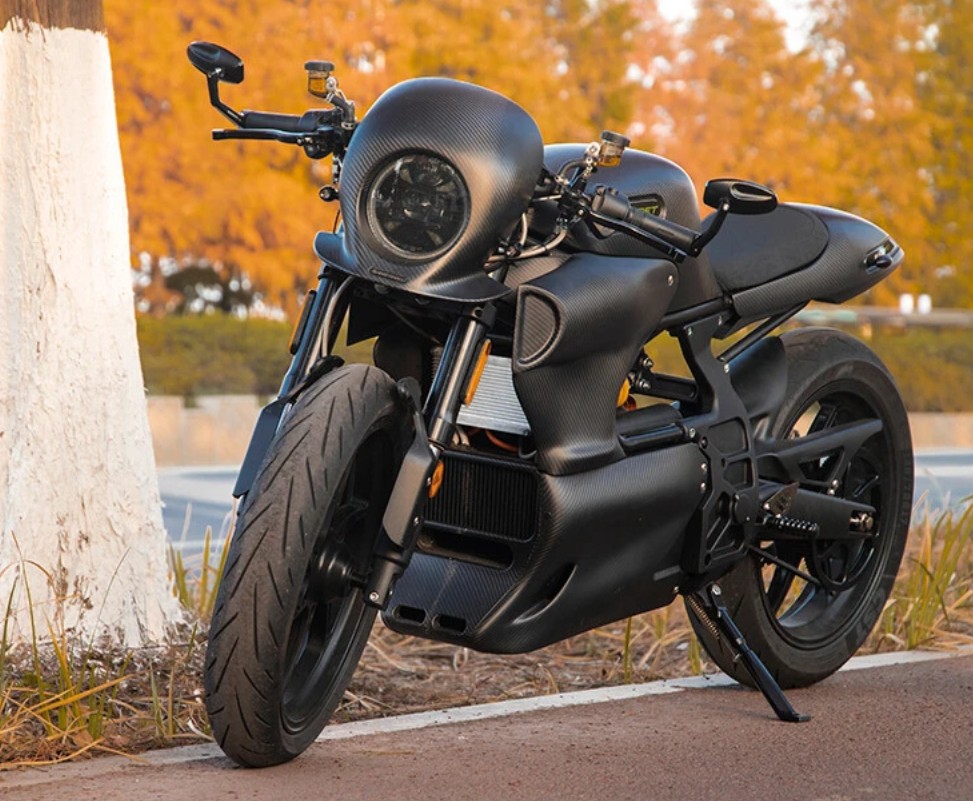
Electripet is based in Wuxi in Jiangsu Province. The company makes electric two-wheelers and electric go-karts. The absolute best Electripet bike is the Hipee, a retro-style belt-drive mid-motor machine with a carbon-fiber body.

The output is 11 kW/349 Nm, good for an 80.7 mph top speed. It has a 72V/100AH lithium-ion battery for a 112-mile range. Charging time is six hours. The wheelbase is 53.9 inches, and the curb weight is 462.9 lbs. The Hipee has multiple riding modes: off-road, street, and racing. Like in an automobile, the rider can adjust the settings of the regenerative braking system.
Luyuan S95

Luyuan is a personal favorite because I owned one of their electric scooters for many years. Mine was an older model, large, with a giant trunk under the seat, large enough for lots of beer or my office backpack. It had a hub motor, lead-acid batteries, hard rubber wheels, a 37-mile range, and a 40 mph top speed. It was a great bike, never once let down. On the weekends, I used it for long drives in Dongba, a then-unknown district in the far east of the city, which was morphing from a semi-rural area to the large Beijing suburb it is today.

Anyway, Luyuan has come a long way since then, too. The Luyuan S95 is the top-spec machine with a 50 mph top speed and a 93-mile range. It has a 72V45Ah LFP battery and an 8 hp hub motor.

It has single front brake discs, but the disc has a giant 317 mm diameter, so big indeed that it barely fits inside the wheel. At the rear, it has a sleek brake setup too, with a 200 mm perforated disc next to the hub motor.

With an app, users can remotely start the vehicle, and it accepts OTA updates. A cool feature is the brand logo projection system. I wish I’d had that on my Luyuan!
Mota Z3
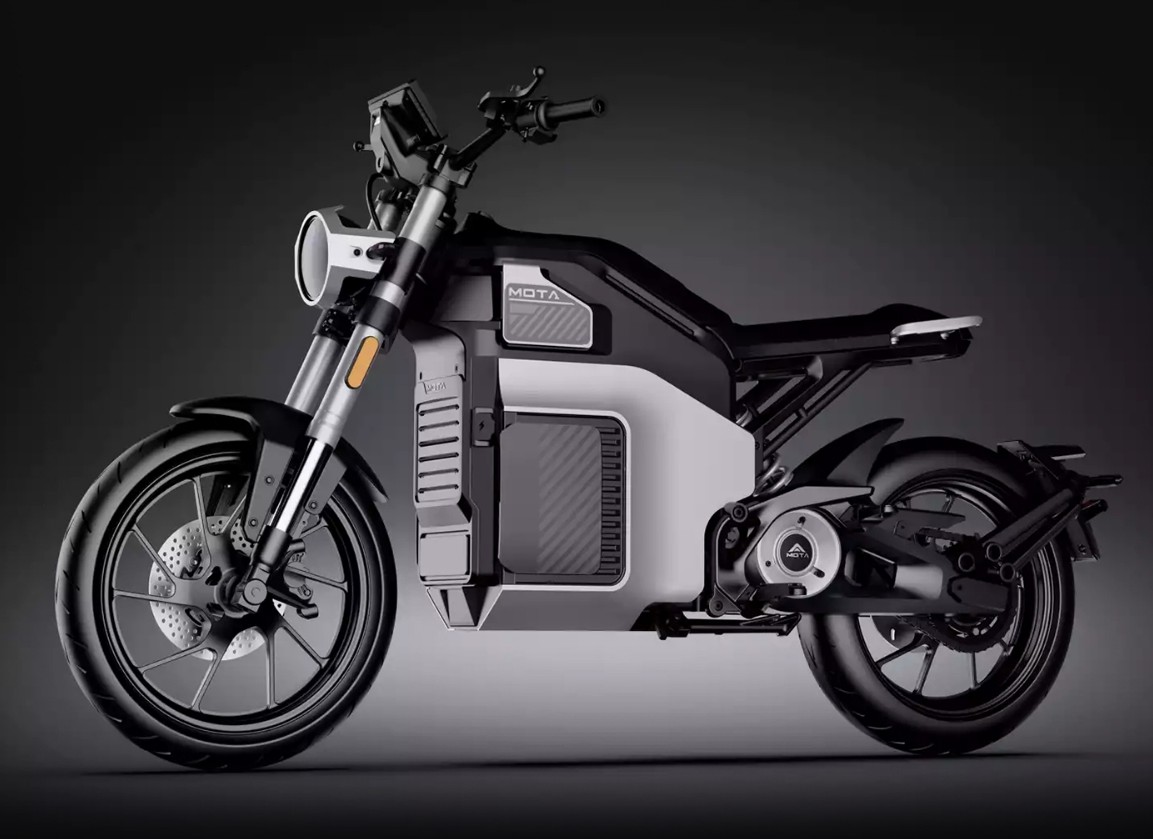
Mota is a new Chinese electric motorbike maker, founded in 2023 in Shanghai. It outsources its development and manufacturing to specialized companies. In this way, it was able to launch its first bike in 2024. The Mota Z3 is a high-tech single-seat machine with a clean design. It has a mid-drive chain motor with 6.7 hp and 350 Nm. The top speed is 62 mph, and 0-31 mph takes 5 seconds flat. The range is 87 miles thanks to a twin lithium-ion 72V 35Ah battery pack.
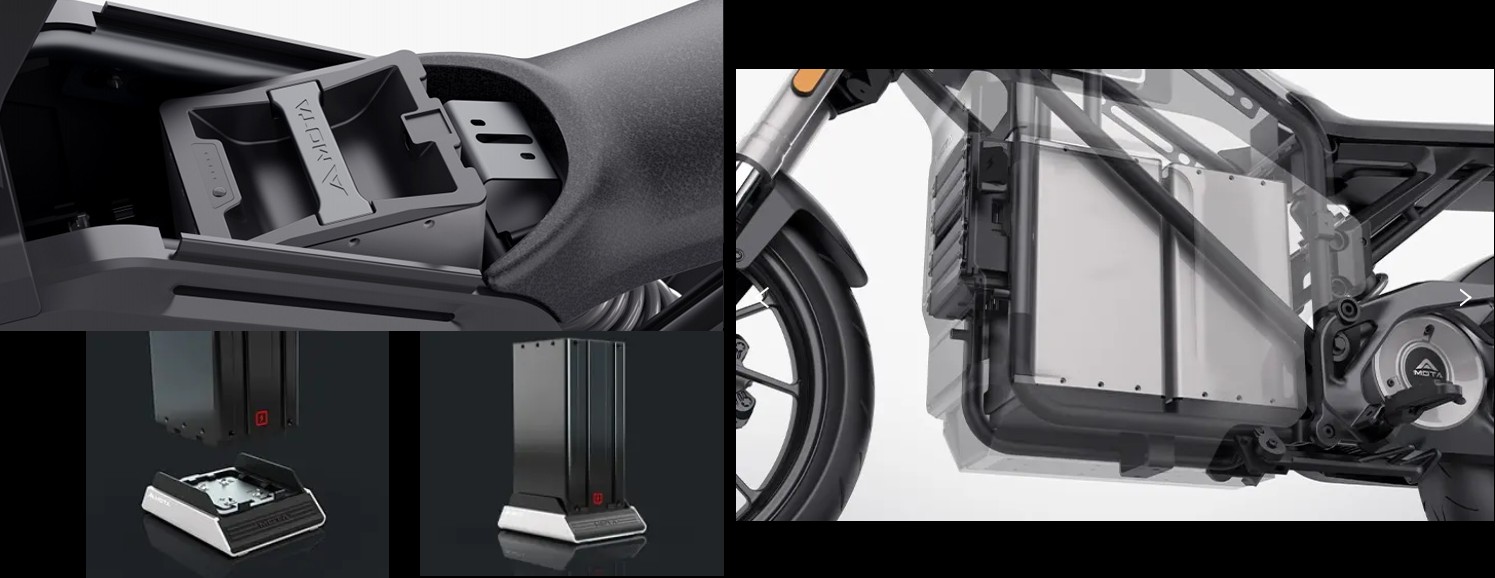
Each pack is removable and swappable. Mota is developing a battery-swap network. The company says the battery packs are the same for its entire lineup, making it easier to design swapping stations.
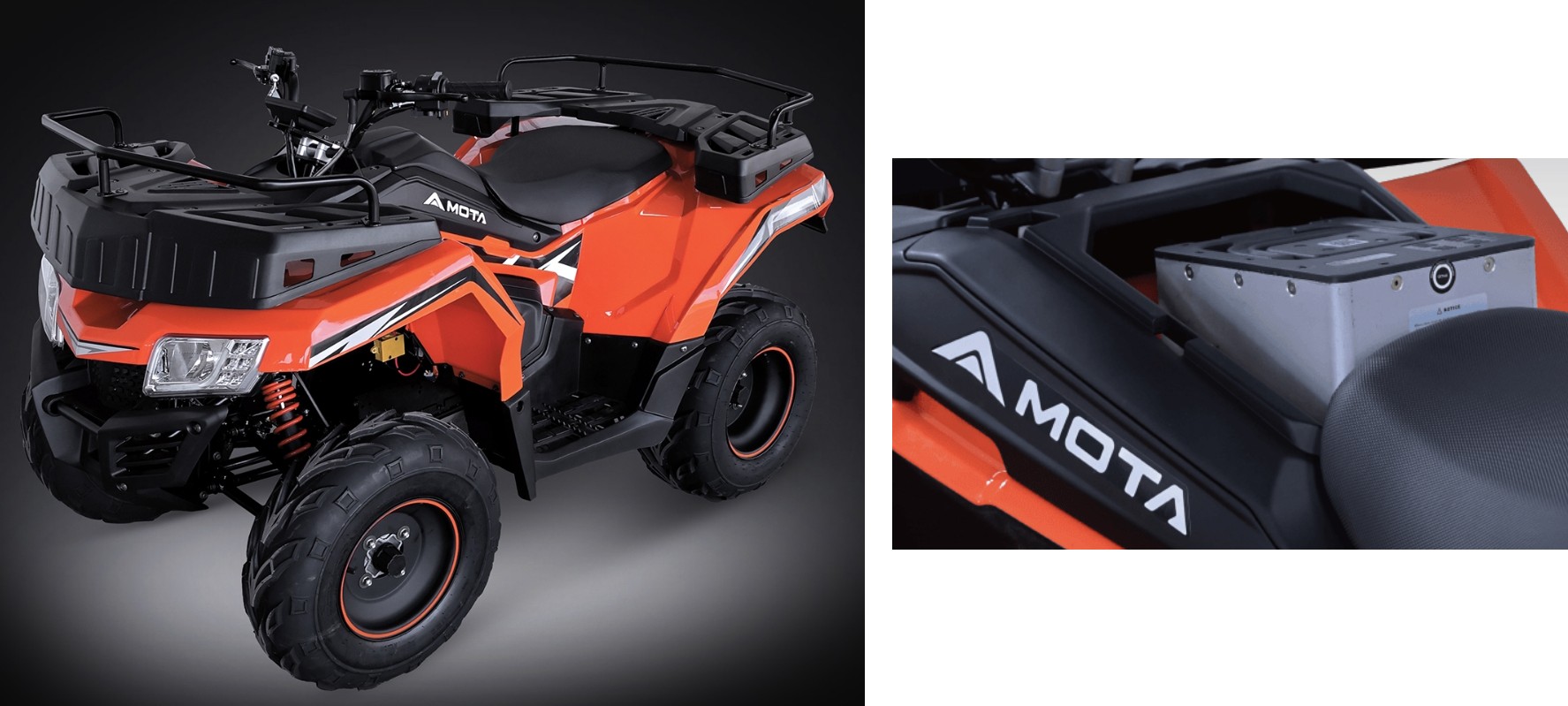
Even Mota’s e-ATV electric quad uses the same pack.
NIU RQi
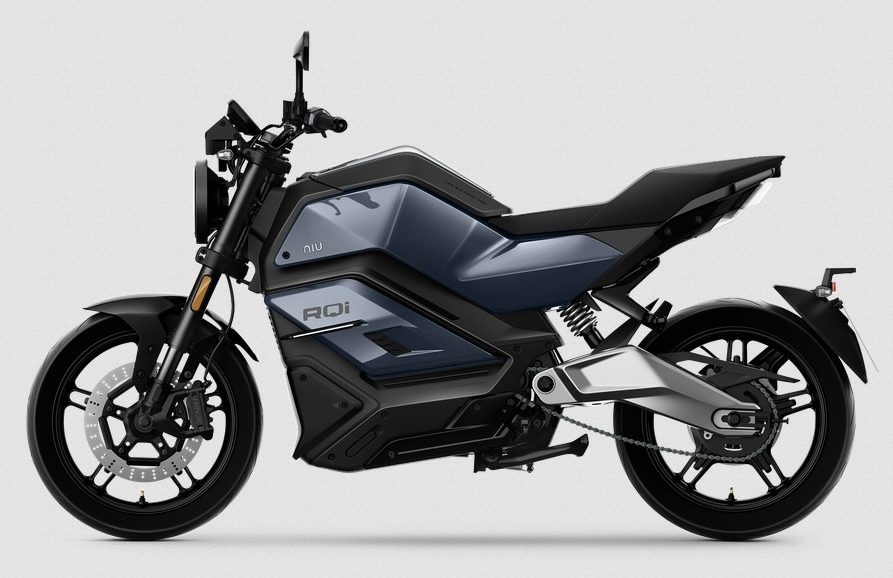
NIU was the first electric two-wheeler brand in China that exclusively focused on young & cool city folks, with hip design and flashy marketing. The brand is based in Beijing, founded in 2014. It sells electric kick-scooters and scooters, and recently launched its first electric motorbike.
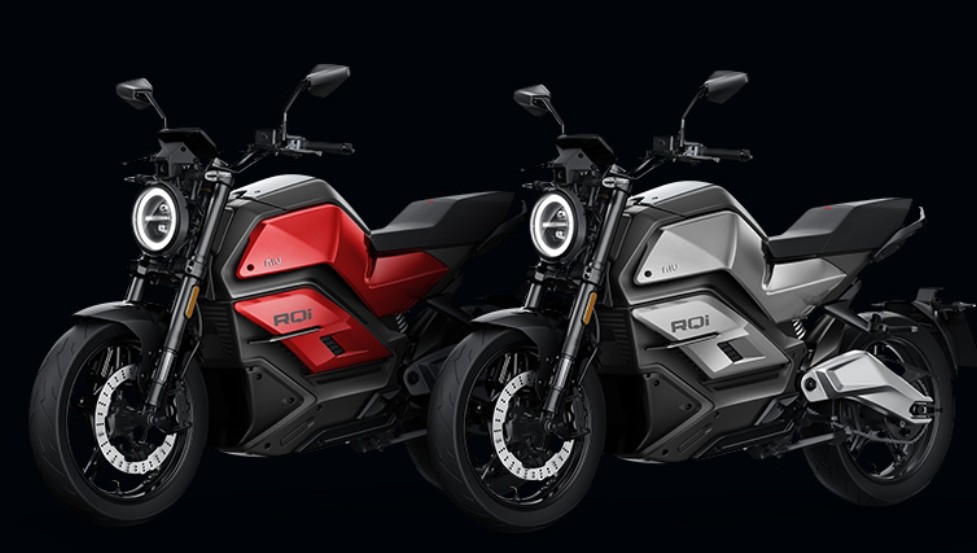
The RQi Sport has a somewhat conventional design compared to NIU’s other machinery, with a large round headlight and clean panels. It has a mid-drive motor & chain setup.
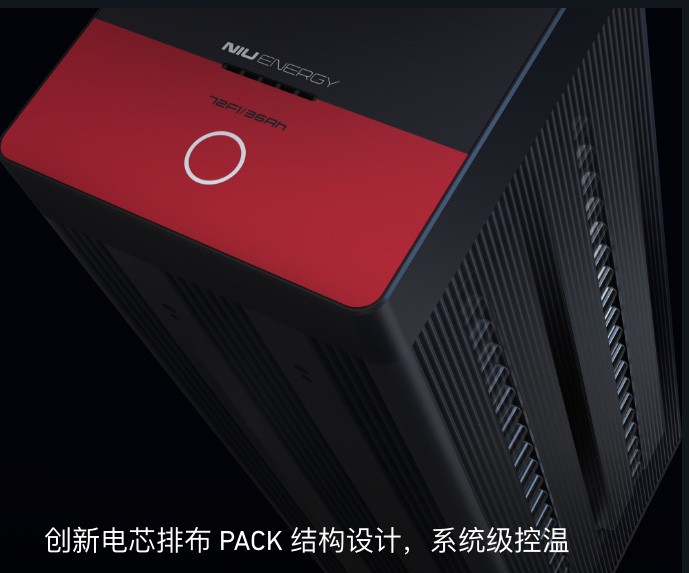
The output is 10 hp and 450 Nm, good for a 68 mph top speed and a 0-50 (0-31 mph) acceleration of 2.9 seconds. It has a single front brake disc, but it does have Brembo calipers. The battery is a dual removable 72V36Ah lithium-ion pack, for a range of 62 miles.
Omvoway Omo X

Omoway is a new Chinese-Singaporean company founded in 2024 by Todd He, who co-founded electric vehicle maker Xpeng. The company’s R&D is in Guangzhou, its nominal HQ is in Singapore, and its first factory is under construction in Indonesia. The brand is mainly focused on markets in Southeast Asia.
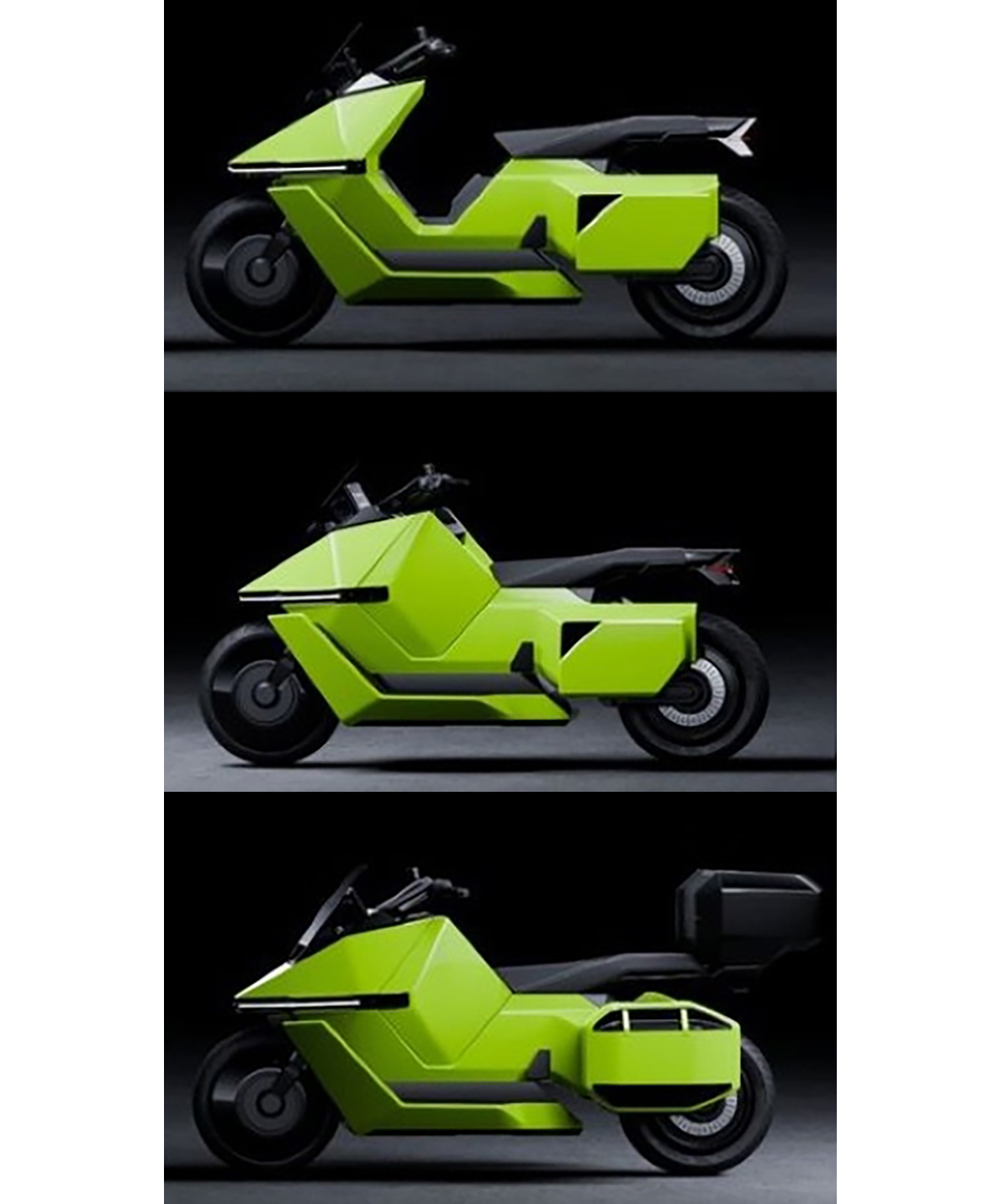
Omoway calls the Omo X “The world’s first multiform motorcycle.” The machine has three “forms:” Scooter, Street, and GT. Scooter is the standard shape for the city, with an open footwell. Street is for longer rides, with extra aero. GT is for weekend trips, with side and top cases.
Sunra Dream

Sunra is one of China’s largest electric two-wheeler makers, founded in 1999 in Beijing. The company’s slogan (translated) is: “Where there is sunray, there is Sunra.” The company runs five factories in China and sells a wide variety of vehicles.

The Sunra Dream is a two-seat spaceship-like scooter with a hub motor and a 72V100Ah battery pack. The Dream has a 10.7 hp electric motor, a 74-mile range, and a 74 mph top speed. It is equipped with ABS and dual front brake discs. Buyers can choose between 14 different colors, which is a lot for an electric scooter.
Tailg S91 Pro
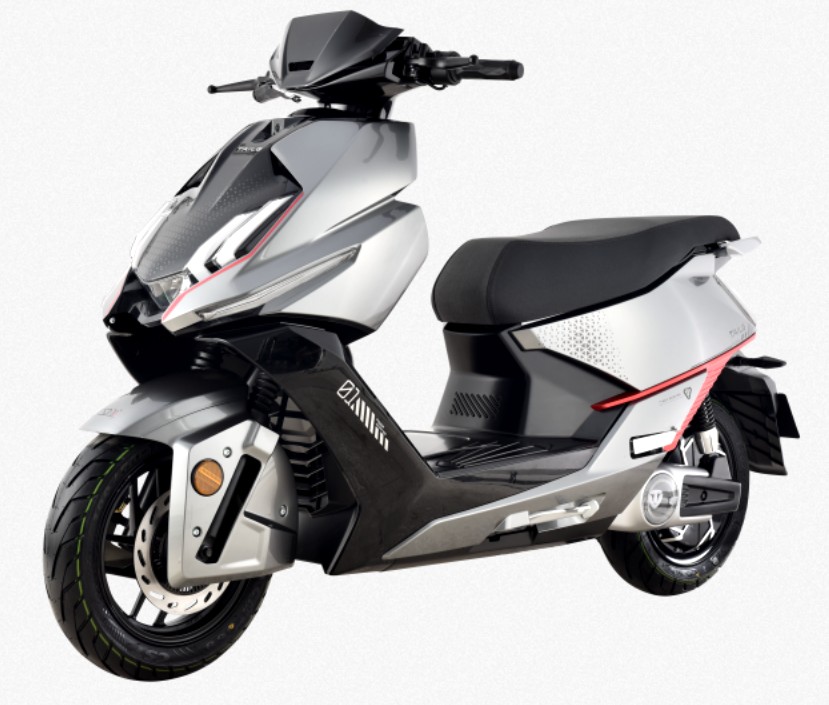
Tailg is an electric-mobility company founded in 2003 and based in Dongguan, Guangdong Province. It makes electric bicycles, scooters, and motorbikes.
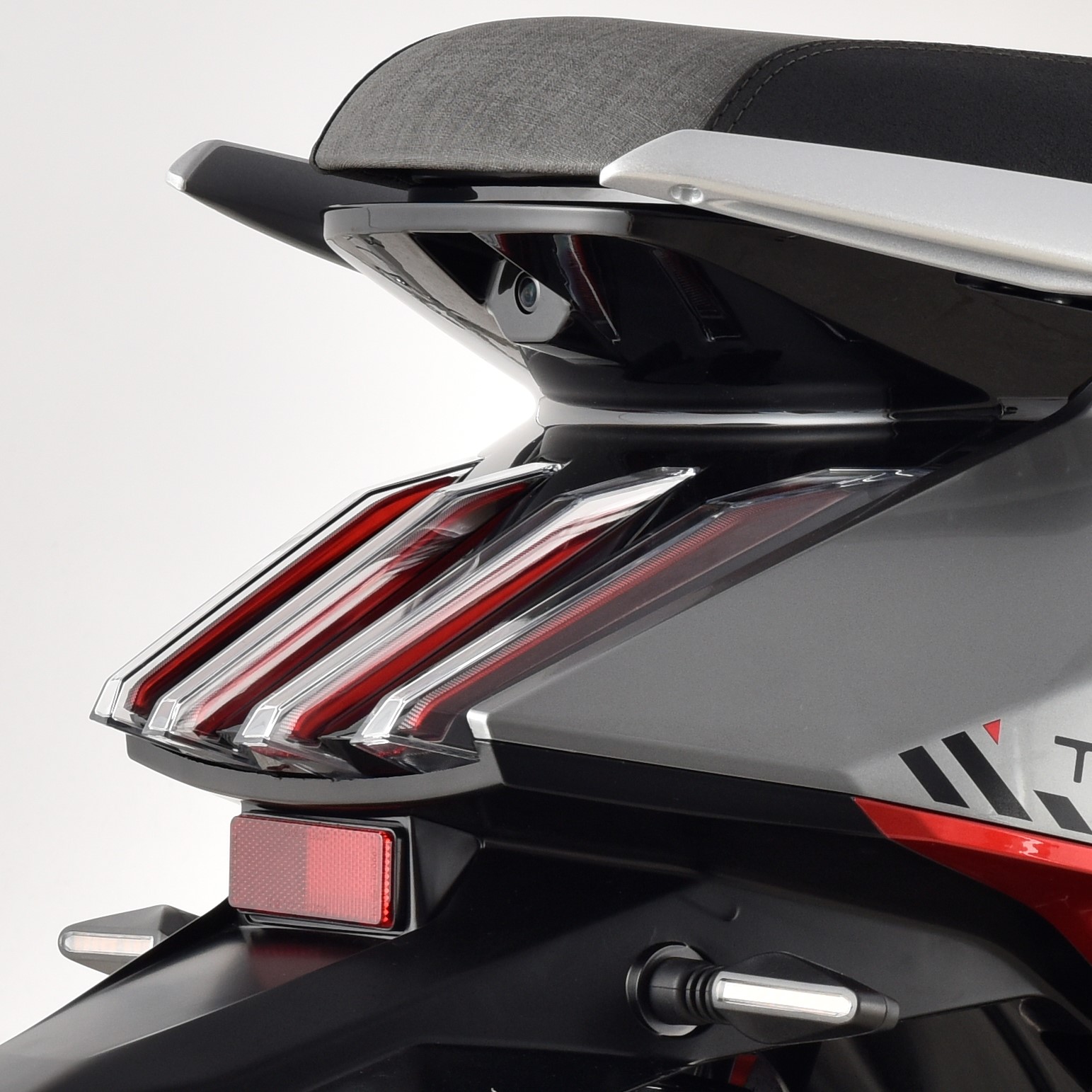
The S91 Pro is a speedy electric scooter with a wild robo design. The slogan is “Unleash Your Wildness.” You can do that with a 6.7 hp/205 Nm hub motor and a 68-mile top speed. It does 0-50 (0-31 mph) in 2.6 seconds – super quick. It has a 72V28Ah lithium-ion battery for a 100-mile range. The S91 Pro is equipped with dashcams at the front and rear, and the rear taillight’s design is called “Wolf Claw.”
Tonma Aliens Racer
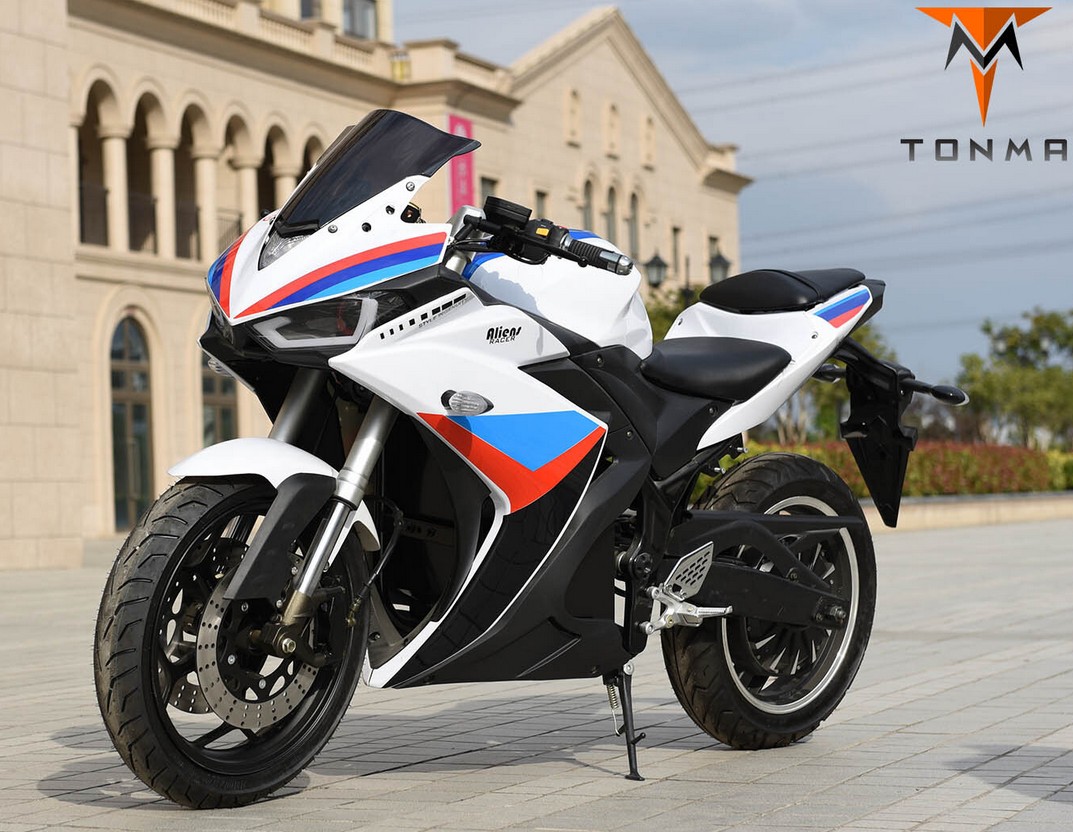
Tonma, founded in 2009, is based in Wuxi in Jiangsu Province. Its most extreme machine is the Aliens Racer, a racy bike with a hub motor. It has ventilated double-disc brakes up front and single discs at the rear. The top-spec model has 9 kW (hp) and a 72V80AH lithium battery. The top speed is 71 mph, and the range is 45 miles.

Tonma’s names are cool. The company also sells a KTM, a Hurricaner, a Monster King, a Little Monster, an M6 Ripper, and the NIUPLUS. The latter is a curious dig at NIU, a competitor. By calling the scooter NIUPLUS, Tonma wants to say it is better than a NIU.
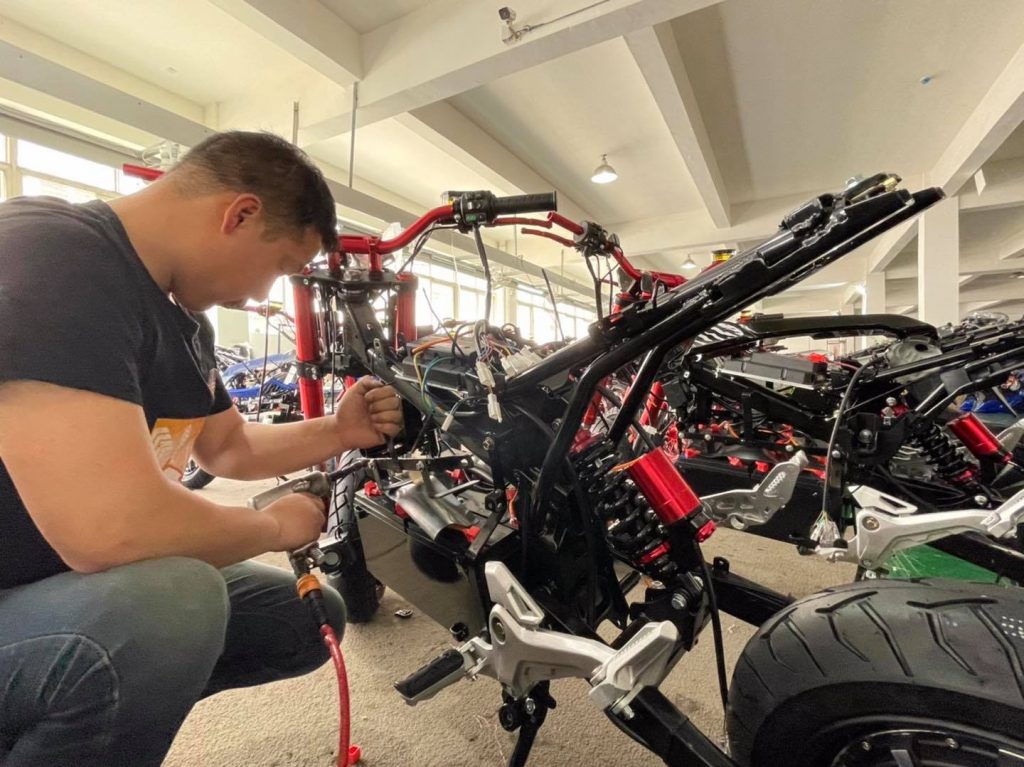
Yadea Kemper

Yadea is one of the hottest electric two-wheeler makers in China. The company makes kick scooters, bicycles, scooters, and motorcycles. The company’s slogan for the Kemper is “Impulse Your Power.”

The Kemper accepts OTA updates. Standard equipment includes a camera above the front light. It saves the footage on a memory card or in Yadea’s cloud. Riders can immediately share the images on social media. Just like with many Chinese cars, users can unlock the Kemper with a smartphone or with voice control; just talk to it and it’ll unlock.

It has a 40 kW mid-drive motor, good for a 160 km/h (99 mph) top speed and a 0-100 in 4.9 seconds. The battery is a 320V V20 Ah LFP unit. The Kemper can charge at a standard automotive fast-charging station. Yadea claims a 0-80% charge in 10 minutes.
What’s Next?
And with that, we are at the end of this story … but the ascent of the electric two-wheeler has only just begun. Technology will continue to improve, with more power and range. Brands will be born and die. Prices will go down. There is still a large market up for grabs in China, and ever more companies have started to export. There is substantial export already, mainly to Southeast Asia and Europe. Unlike with automobiles, there aren’t any sanctions on electric motorbikes yet, so some may even make it to the United States. We’ll see!
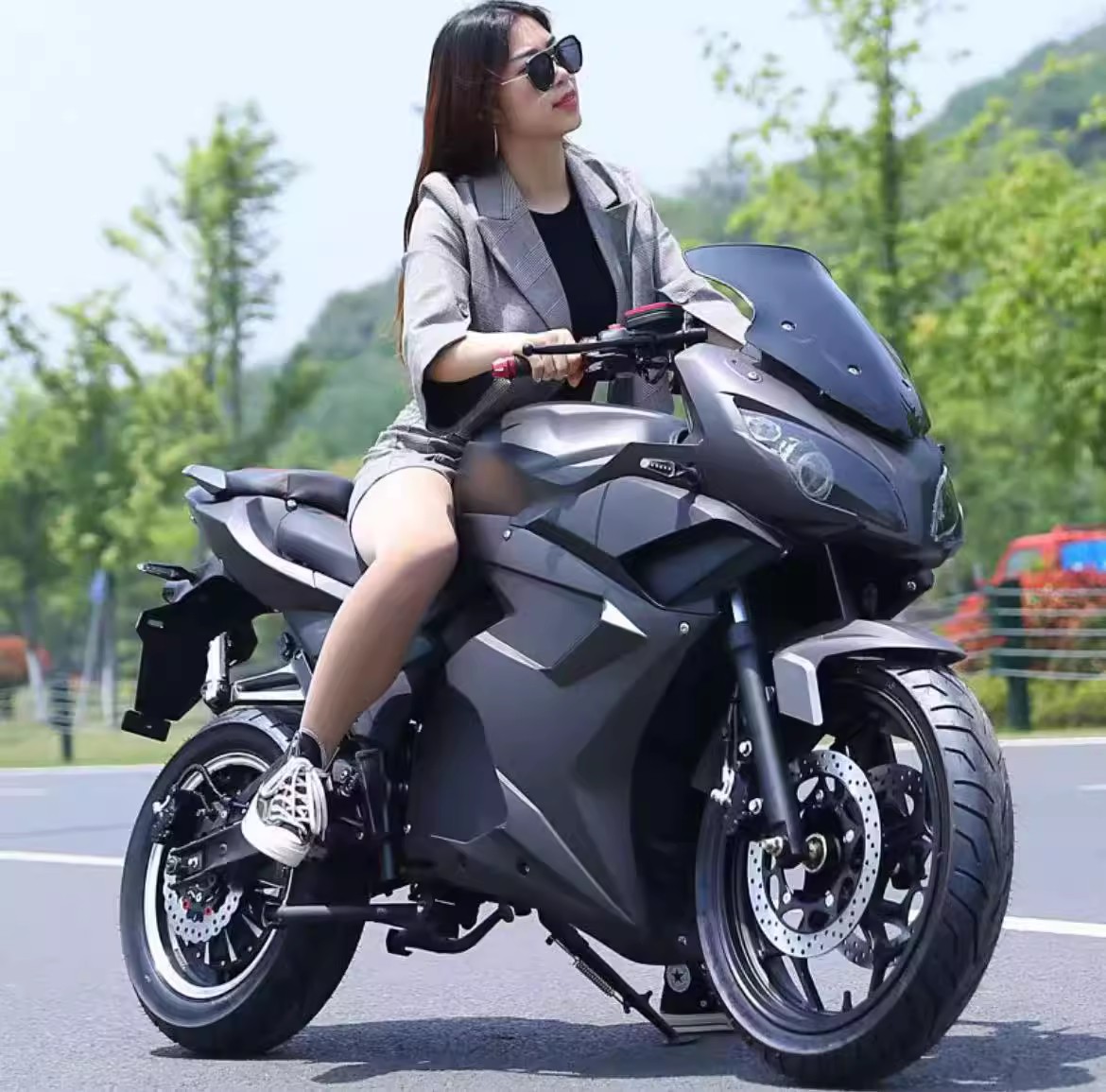

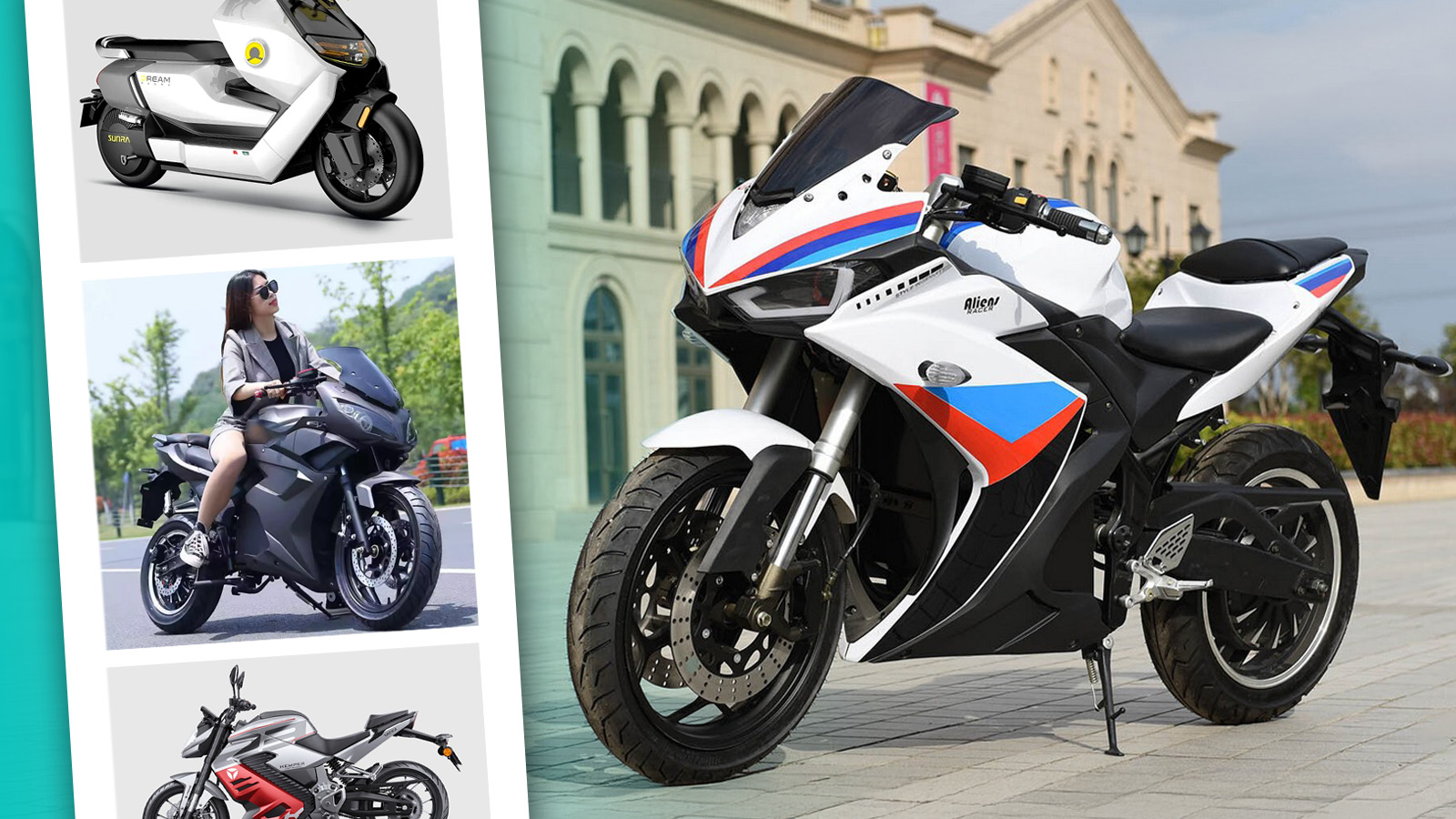







That AW Motor A-E1 looks pretty sweet, and is roughly the spec of an older Zero S which is a perfectly competent bike.
What’s next is to get Mercedes out to China to try these!
Visitor visas recently got a lot easier!
Hey thanks for this highly informative article! I am moving to Beijing in August and will be buying an electric motorcycle as a primary means of transportation so your article is a great introduction to the local market and current selections. I absolutely loved both Davinci and Hipee and will be looking into both of them. I am still bummed that Eric Buell failed to bring Fuell to reality but Davinci seems to be just as exciting although at a considerably higher price point (I think Fuell was priced around $10,000). Back in 2014 I had a basic Giant ebike in Nanjing and managed with it just fine so it’s pretty exciting to see how much the industry has progressed since then. Keep up the excellent writing Sir!
Moving to the big city, that’s pretty cool!
China+NEV=Battery Fires.
Heck they can’t even get basic battery banks to not catch on fire. They issued a recall, but then all shipping companies in China refused to send the items back for the recall…due to the recall for them being dangerous.
Vehicles catching on fire would be nation-wide news. In China? They are putting car-covers or having fire-fighters remove badges on burning cars to save face to the rest of the world.
I would consider items sold in the US to be safer, but no:
https://www.youtube.com/watch?v=pQ6WPRNlV9g
Yup, over >40% of the car market in China is electric/PHEV, and that’s without counting scooters (>80%), vans, and trucks. So surely, there are more fires too. Small fires don’t make it to the news anymore, only big, nasty ones. Chinese firefighters have developed all sorts of ways to deal with EV-battery fires. The best way seems to be to dump the entire burning vehicle in a water-filled container, close it, and wait. Fires in underground parking lots are still hard to extinguish, though.
Cool to see that last model is wearing Cons.
Some of these bikes are really tempting. They’re the last thing H-D or Honda need, but maybe they’ll partner up and get in front of the avalanche?
Hello! Honda makes EV motorcycles in China with the Wuyang-Honda joint venture. These motorcycles are largely based on Chinese tech and are only sold in China. I didn’t include non-Chinese brands in the article, as it was long enough already (: Maybe I can do a follow-up later.
I went to China in 2019, and was impressed by the number of electric scooters. At that time they were still pretty rare in London, where I live (and have owned several scooters myself).
I’ve spent a lot of time in Italy over the years, and having silent scooters circling around felt like the Ghosts of Vespas Past.
SUN RA!
Thanks for the write-up, Tycho! This was really interesting; I’ve been keeping my eye on electric motorcycle developments here in the US and it’s cool to see what is going on in the rest of the world.
I’ve envisioned myself entering the electric motorcycle world via a dual-sport for day trips in the mountains or a super moto for zipping around the city!
Whoa, the DaVinci looks pretty awesome!
I purchased a Mario E-bike off of Alibaba back in 2021. Use it pretty much everyday to commute to work and still absolutely love it. It has a top speed of around 37 MPH so I can keep up with traffic with no problems and a range of about 17 miles, so I only have to charge it once a week. If you live within 2 miles of your job and drive to work solo, it is, hands down, the best way to commute (so long as the temperatures stay above freezing, which, for me, is about 9 months out of the year).
Great story, thank you. Good example of how demand leads to some pretty great products. I would absolutely consider some of these if I was looking for a new commuter. Americans have a strange motorcycle culture that views them as being for a couple of types of rider only, either the Harley guy in a leather vest, or a street racer in a tank top and flip flops. A lot of these bikes in the article would work for urban transportation in a lot of American cities, but there’s a huge hurdle in perception that would have to be overcome.
A lot of the food delivery folks here move around on those e-mopeds, and usually end up riding the big flashy brands (NIU, Ninebot-Segway, Zeeho). Buy a base model bike with lead-acid batteries for 600USD, swap them out for a 11KWh lithium pack (72V 150Ah for 1200USD), then upgrade the controller and hub motor for 400USD. For 2200USD you end up with a long-range e-moped capable of 150mi of hard riding, with a peak output of around 20KW / 27hp and top speed of around 70mph. Dual disc ABS is increasingly common on many e-mopeds, and if you want rapid charging Alibaba sells Huawei 1U server PSUs for around 120USD, tweaked to output 50 amps at 100VDC max. Splurge a bit more and there’s even DIY DC fast-charge refit kits, complete with DC plugs, DC-DC converters and all the CANBUS handshake stuff.
Haha that’s cool! Yes, Alibaba sells everything; you can even change an e-step into a 20-kW speed machine.
The first thing that leapt out was Tonma ripping off BMW Motorsport colors. After that, it’s good to see Luyuan reviving Buell’s inside out disk brake design The CCLNG? early in the article captures the look of a 70s sports moped and the Sunra e-bike is an interesting mash up of retro motorcycle and cruiser bicycle.
Personally I have no desire for an electric motorcycle, but if this can get me a cheaper electric gravel bike I’m all for it
Alongside a few of these, those recto-techno BMW scooters are not that odd.
Many of the NIU models are available for sale in the US. They are imported and sold by the Genuine Scooter Company out of Chicago. I haven’t looked lately, but before tariff time, they were priced pretty decently.